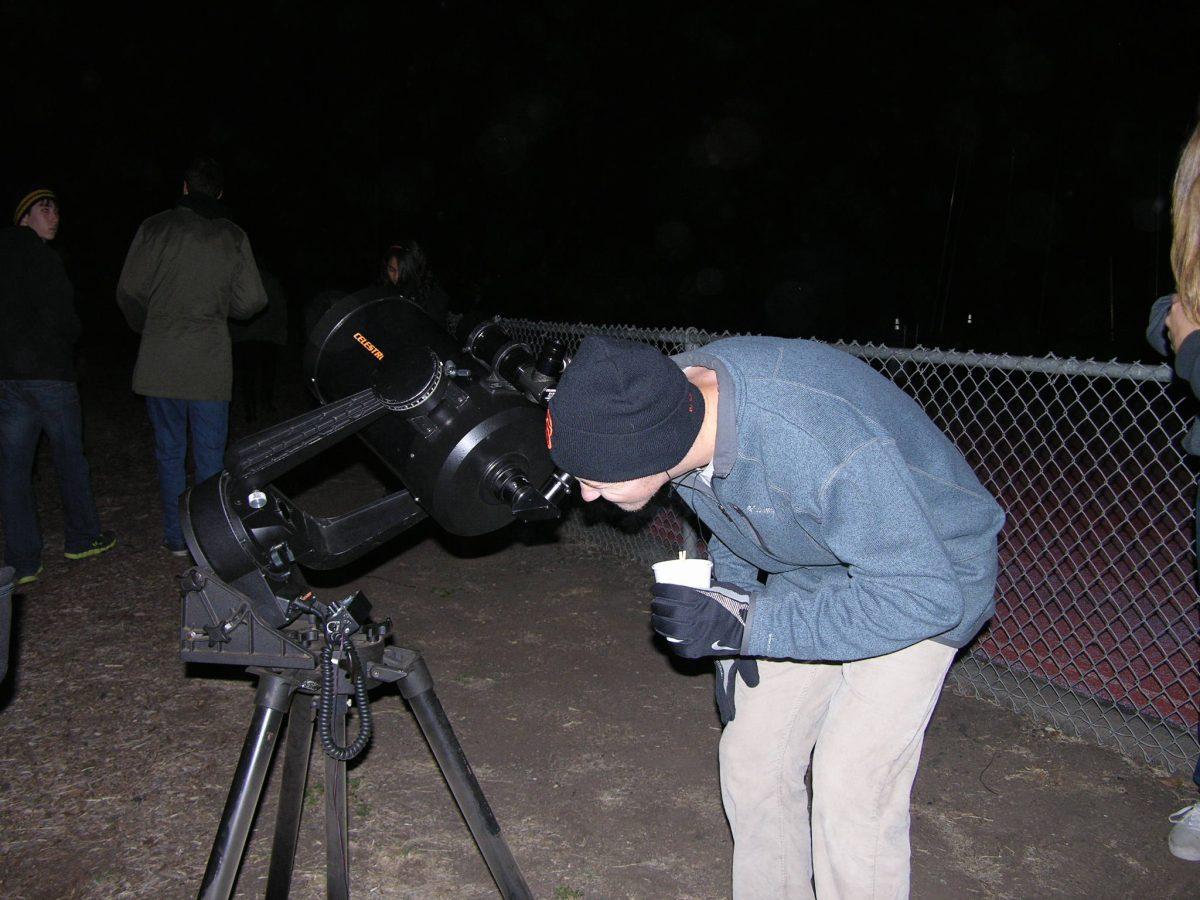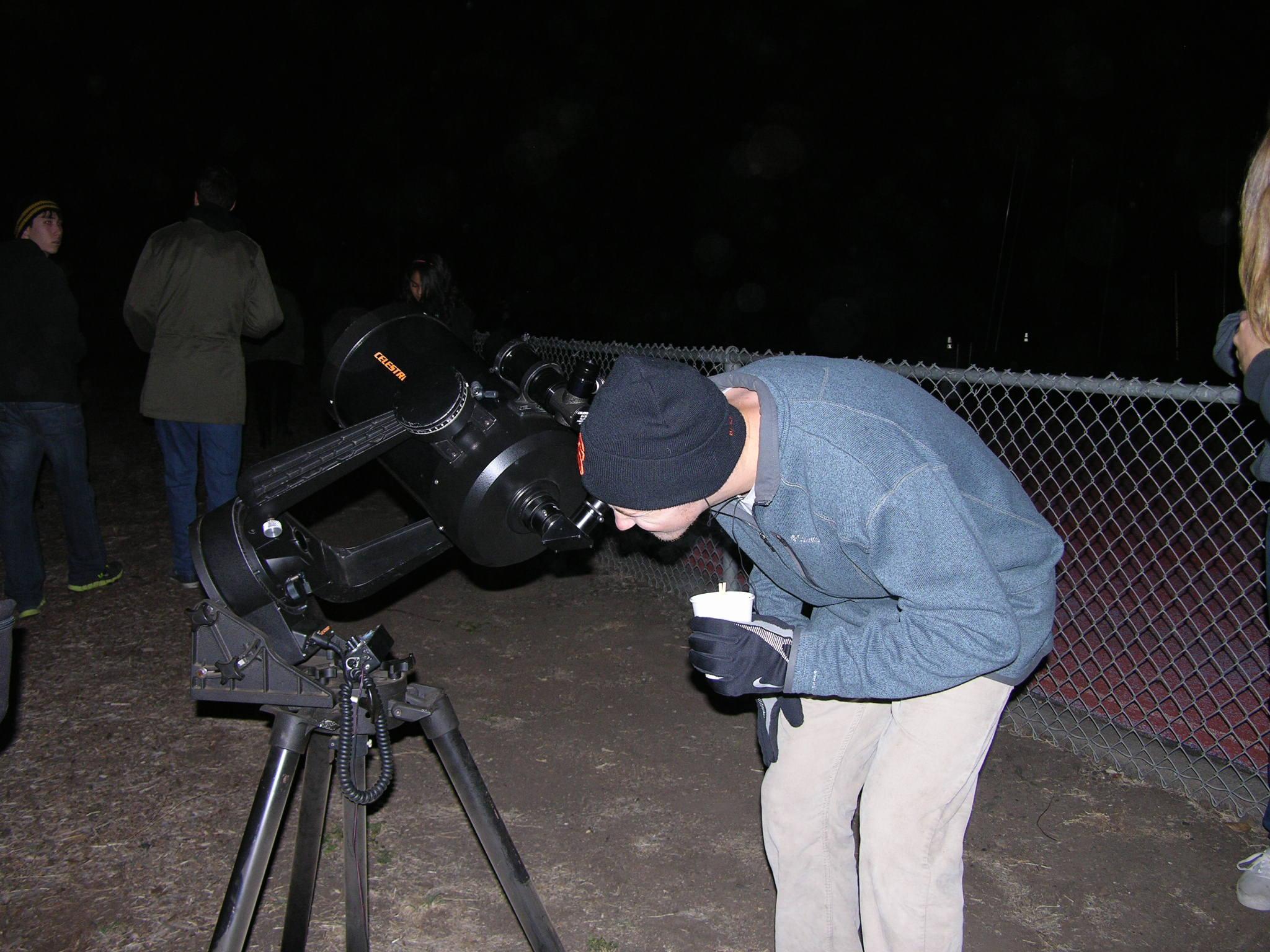Walking around the Sonoma State track on a Friday night, in the pitch dark, might seem slightly strange. However, those who do will find an excellent opportunity for entertainment and education.
“In the 1970s, the great Dr. Joseph S. Tenn went searching for the darkest place on campus,” said professor C. Wesley Farris II. “When he found it, he stomped his foot down.”
The Sonoma State Observatory still stands on that land today. The telescopes are housed in a small shed-type structure on the inside of the Seawolf Stadium on the southeast corner of campus. The telescopes used for the public viewing nights vary greatly.
Some of them are privately owned by professors and others have been purchased by the university. Some of the telescopes are valued at a few hundred and others cost thousands of dollars. Over the course of a semester hundreds of students visit the observatory.
“The public viewing nights are for students as well as the community,” said Farris.
The observatory gives the public an opportunity to engage with the university. There were members of the community in attendance on Friday. Robin Pence and Theresa Beach brought their children to the open viewing night.
“I looked on the Sonoma State website and found that the observatory was open tonight,” said Pence. “I thought it would be fun to bring the kids.”
Nine-year-old Kyle Pence was excited about looking through the telescopes.
“I saw a galaxy far, far away,” said Pence.
Even though he may have been unaware of it, his statement was nonetheless correct. Last Friday one of the telescopes was pointed at the Andromeda Galaxy which is approximately 2,538,000 light-years from Earth.
Unfortunately, there was some cloud cover during the open viewing and at times guests were unable to see anything through the telescopes. However, during the brief periods of clear skies guests were able to observe the Andromeda Galaxy, the moon, Venus and dying stars. Visitors could also view the star Vega, which is the fifth brightest star in the night sky.
After looking though the telescopes, students gathered around professor Farris as he gave an informational talk about comets and their origins. Farris informed listeners that comets used to be greatly feared by people. In the past, comet pills were created and claimed to protect people from them.
However, research has now proven that comets are just rocks, dust and ice. Basically, they are dirty snowballs. Farris mentioned the famous Halley’s comet, which is visible from Earth every 75 to 76 years. The next time Halley’s comet will be visible is on July 28, 2061.
During the previous public viewing nights, the telescopes were focused on other objects in the sky. Visitors still have the chance to attend a public viewing on Nov. 22 from 7-9 p.m. All public viewing nights are free and are open to the public.
The observatory is yet another educational and unique experience that Sonoma State has to offer. Students who take advantage of this program will learn about the solar system, distant galaxies and other planetesimals. It is also an opportunity for non-physics majors to learn about space and the way the universe works.
“I had fun and learned a lot too,” said sophomore Elise Hedges. “The hot chocolate and snacks were an added bonus.”





![[Both photos courtesy of sonoma.edu]
Ming-Ting Mike Lee stepped in as the new SSU president following Sakakis resignation in July 2022](https://sonomastatestar.com/wp-content/uploads/2024/04/CC4520AB-22A7-41B2-9F6F-2A2D5F76A28C-1200x1200.jpeg)



























